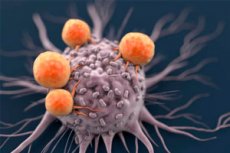New publications
Uncovering key answers about cell function to improve cancer treatment
Last reviewed: 02.07.2025

All iLive content is medically reviewed or fact checked to ensure as much factual accuracy as possible.
We have strict sourcing guidelines and only link to reputable media sites, academic research institutions and, whenever possible, medically peer reviewed studies. Note that the numbers in parentheses ([1], [2], etc.) are clickable links to these studies.
If you feel that any of our content is inaccurate, out-of-date, or otherwise questionable, please select it and press Ctrl + Enter.

Researchers at the Peter Mac Institute have found an answer to a long-standing question about how cells function, which could lead to better cancer treatments in the future.
Every cell in the human body has the same DNA, but different cells perform different functions. This research, published in the journal Nature Genetics, helps explain how this is possible, and its implications could be huge. Professor Mark Dawson, a physician-scientist and deputy director of research at Peter Mac, said he was delighted by the new findings, which better explain how a cell’s fate is determined.
"Cell function is the result of the action of 'transcription factors' that scan our DNA and determine which genes should be turned on and to what extent," he said.
"We have studied how these transcription factors recruit and deliver the machinery needed to turn on genes. Until now, we did not know how 'transcription factors' select the correct machinery to read and express a gene.
"This has been a long-standing question, and we are pleased to have helped solve part of the problem, because this knowledge of how exactly transcription factors make decisions about which mechanism to activate a gene provides us with fundamental knowledge about life."

Comparative CRISPR screens identify cofactors required for nine different transcriptional activators (ADs). Source: Nature Genetics (2024). DOI: 10.1038/s41588-024-01749-z
The study showed that transcription factors select a unique set of components to control gene expression, creating the desired effect, whether that is controlling a cell’s energy use, triggering an immune response or another function our bodies require. Professor Dawson said this could be compared to how cars are built and explained how this important discovery is key to finding better treatments for a range of diseases.
"An F1 racing car is very different from a family minivan or even a tractor, some cars are designed to go fast, others to carry valuable cargo and some to do hard work," he said.
"We found that the same is true for gene expression, and this is determined by the components that are recruited by transcription factors. These can determine which genes can change quickly, for example when we need to fight an infection and need a quick response, or which genes need to work slowly and steadily, producing messages that are necessary for cellular housekeeping function.
"This understanding of how transcription factors can tune gene expression is incredibly important, and we hope to use this to help us treat various diseases in the future.
"If we think about cancer, mutations in cancer can prevent a transcription factor from selecting the right components to express a gene correctly, it's like if the parts of a car were mixed up and it could no longer work reliably."
Dr Charles Bell, a postdoctoral researcher at Peter Mac, said they had developed a platform to screen the function of thousands of components used by transcription factors to determine how a gene is expressed.
"We will now use this platform to understand other processes related to gene expression," he said.
"The answers to these questions will help us find new ways to treat not only cancer, but many other diseases in the future."
